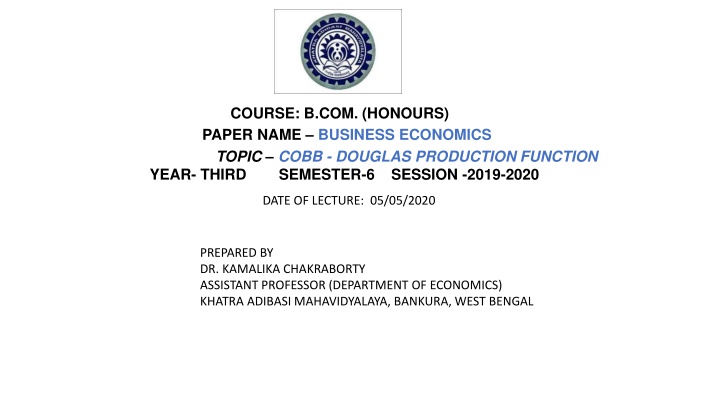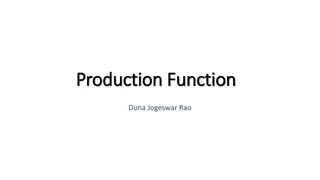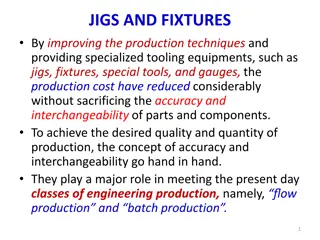
Cobb-Douglas Production Function in Business Economics
Learn about the Cobb-Douglas Production Function, a key concept in Business Economics that explains the relationship between output and inputs like labor and capital. Discover its properties and implications for firms' production decisions.
Download Presentation

Please find below an Image/Link to download the presentation.
The content on the website is provided AS IS for your information and personal use only. It may not be sold, licensed, or shared on other websites without obtaining consent from the author. If you encounter any issues during the download, it is possible that the publisher has removed the file from their server.
You are allowed to download the files provided on this website for personal or commercial use, subject to the condition that they are used lawfully. All files are the property of their respective owners.
The content on the website is provided AS IS for your information and personal use only. It may not be sold, licensed, or shared on other websites without obtaining consent from the author.
E N D
Presentation Transcript
COURSE: B.COM. (HONOURS) PAPER NAME BUSINESS ECONOMICS TOPIC COBB - DOUGLAS PRODUCTION FUNCTION YEAR- THIRD SEMESTER-6 SESSION -2019-2020 DATE OF LECTURE: 05/05/2020 PREPARED BY DR. KAMALIKA CHAKRABORTY ASSISTANT PROFESSOR (DEPARTMENT OF ECONOMICS) KHATRA ADIBASI MAHAVIDYALAYA, BANKURA, WEST BENGAL
Cobb - Douglas Production Function The Cobb Douglas is widely used to represent the relationship of an output and two inputs. The Cobb Douglas function is of the form: Q(L,K) =A? ? where: Q = total L = labor input (the total number of person-hours worked in a year) K = capital input A = total factor productivity(efficiency coefficient ) and are the output elasticity of labor and capital, respectively. These values are constants determined by available technology.
C-D production function is a homogeneous function, the degree of homogeneity of the function being + Properties of Cobb-Douglas Production Function which is Homogeneous of Degree One: The C-D production function of degree one may be written Q=AL K1- The properties of this function are (i) Average of L and K, i.e., APL, APK would be the functions of L-K or K-L ratio. (ii) In the case of C-D production function both MPLand MPKto be functions of L-K ratio. (iii) In the case of C-D production function the APLand MPLcurves and the APKand MPKcurves, all would be downward sloping.
(iv) In the case of C-D production function, coefficient of partial elasticity of Q w.r.t. a change in L, K remaining constant, would be EQL= = constant, and the coefficient of partial elasticity of Q w.r.t. a change in K, L remaining constant, would be EQL= 1 = constant. (v) For the C-D production function, the isoquants of the firm would be negatively sloped and these curves would be convex to the origin. (vi) For the C-D function, the expansion path of the firm would be a straight line.
(viii) For C-D production function, total output would be exhausted if the inputs L and K are paid at the rate of their respective marginal product, i.e., L. MPL+ K. MPK= Q. (ix) For C-D production function , if labour (L) and capital (K) are paid at the rate of their respective MPs, then the relative shares of labour and capital would be and 1 respectively. (x) Elasticity of substitution between labour and capital in case of C-D production function is equal to one.






















